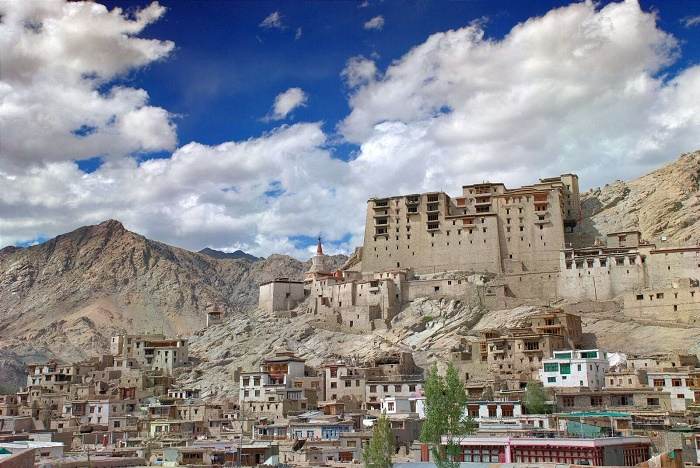
Leh Palace is also known as Lachen Palkar Palace and it is built by King Senge Namgyal in the beginning of 17th century A.D. Leh Palace is a foregoing royal palace and you can picture the lane down the Leh town. The colors of houses are mostly highlighted by brown, blue and yellow structures. And Leh market can be seen with oodles of tourists and locals. Tsewang Namgyal initiated Tsemo Ri and the construction was completed by his nephew Singay Namgyal. The Palace is restored by ASI (Archeological Survey of India).
Leh Palace is a nine-storied building and stands tall with discoveries inside the palace. It is designed in Tibetan style akin to the Potala Palace in Lhasa. Lachen Palkar was left without care and support in the mid-nineteenth century as the royal family departed from Leh after the Dogra invasion. While the lower floors constitutes stables and storeroom, the upper floors of the palace were used as the residence of the royal family members.
A 2004 survey by the Tibet Heritage fund indicates that 55% of the historic buildings were in poor condition. Therefore, it needed rapid restoration and maintenance. And to be done within the required time is indispensable. A maze of pathways, the old town comprises of roughly 200 stone, mud, and timber houses. Traverse through Leh palace with your eyes glued to the wonders of historic events and call it your exploration.